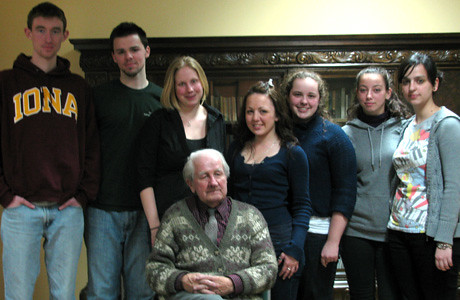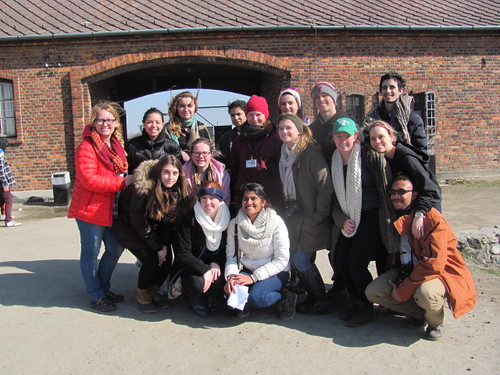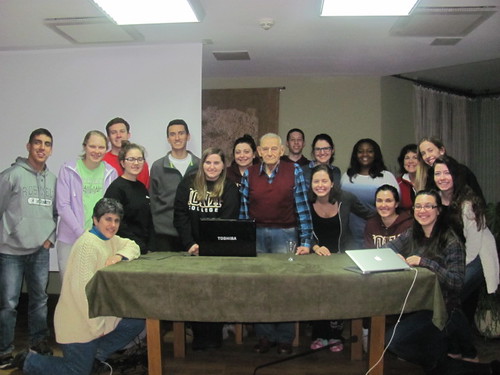 |
| A rock that was on the ground near an original cattle car for Auschwitz that says, “Imagine all the people living a life of peace.” |
The first day in Auschwitz, our guide Lidia spoke about how Jews from Greece were taken to Auschwitz on cattle cars which was a two-week drive and when they arrived nobody got off because either they had died during the trip or they had no strength in them to even move. It sickens me to think that the Nazis would just shove all these people into the cattle cars leading them to their death and that they would just lie to them and say that they needed to leave their homes for safety reasons and that when they arrived they would get a shower, which we know was the gas chambers.
The state in which innocent people were kept in the concentration camps was inhumane and I wish something would have been done about this sooner in order to prevent either less or no people dying at all. Even prior to being sent to the camps towns were barricaded into small areas called ghettos and the life in the ghetto was not much better than in the camps. SS Officers would parade the streets and just beat people for any reason that they wanted to. They could just go into your home and force you to leave all the while destroying it and taking your valuables. We learned a lot about what it was like living in the ghettos in Alexander Donats book, The Holocaust Kingdom. This book was really powerful and gave a lot of great detail of the events and pain that took place while trying to survive in the ghetto walls.
Imagine all the people who would still be alive today if it were not for WWII. What would Poland be like? How would the entire world have been different if this atrocity did not happen? I always think about what could have been if the Nazis did not kill 6 million Jews during the war and how things would have been so different if this did not happen. Would we have found the cure to cancer or other horrible diseases? Would we have world peace, would we have even had a second world war to begin with? These are the questions that sit in the back of my mind when I think about all the people that were killed or had to give up everything they had just to escape to freedom.



















